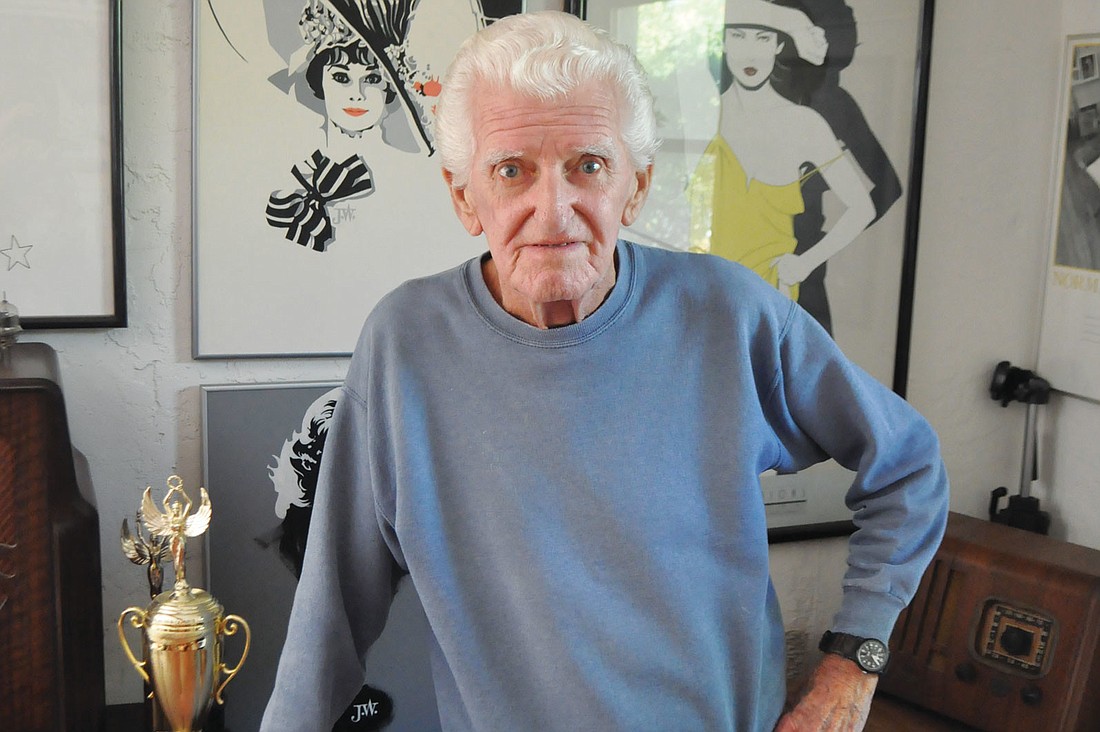- April 26, 2025
-
-
Loading

Loading

A white-haired Jack Warren sits comfortably on the patio in front of his studio at his Siesta Key home. His studio walls are adorned with paintings of old-Hollywood actors and actresses, such as Humphrey Bogart and Marilyn Monroe. A retired graphic artist, Warren spends much of his time painting, a luxury he did not have before retirement.
“I wanted to spend time drawing and painting, but there was no money to be had at it,” says Warren.
After his service in the Navy, Warren went back to school on the G.I. Bill of Rights to become a graphic artist. He wanted to be an illustrator but saw that the industry was declining after World War II. The Connecticut native started his career at a small advertising agency in Bridgeport, Conn., before moving on to designing textbooks in Westport, Conn., where he eventually became an art director. After designing books for 18 years, Warren went on to design packaging, advertising and graphic materials at Pepperidge Farm.
Warren had always loved drawing, and his knack for it never faded.
“I used to like to paint and draw when I was a kid,” says Warren. “I used to copy all the comic book heroes, Superman and Batman, and all the comic books I ever read.”
He continued to draw cartoons into adulthood, except now he was sending his work to magazines such as Playboy and Penthouse.
“I signed my name J.A.C., a pen name, because if they ever found out at Pepperidge that I was at Playboy, I would be out of a job,” he says.
He freelanced cartoons in the evenings and sent in about a dozen at a time. Sometimes one would get chosen, and others were sent back — the industry was competitive. He sold about a half-dozen cartoons a year and made about $1,000 off each, which in the ’60s and ’70s was a lot of money for the work, he said.
“I couldn’t make a career out of Playboy or the rest of them, so that’s why I stuck with Pepperidge Farm,” Warren says. “It was strictly freelance, and it was feast or famine.”
He looks through old cartoons that still have the J.A.C. pen name scribbled in ink or pencil. The cartoons feature seductive women and scraggly men with a quirky caption underneath. Asked what she thought of him selling the racy cartoons, his wife, Kathi, says, “It was just a job.”
Warren went on to write a book for beginning graphic artists, “Basic Graphic Design and Paste-Up.” He made logos for an assortment of businesses and T-shirts, too. Although he was master at his trade, the world of graphic design has been completely altered and digitalized.
“I don’t have a computer. I don’t even know how to turn one on,” Warren says. “I couldn’t get a job now even if I had to. I’m just not trained for it anymore.”
While working at Pepperidge Farm he frequented a bookstore during his lunch hour. It was there that he purchased a box of 8-inch-by-10-inch promotional shots of stars from the ’30s and ’40s. Today, he uses those black-and-white prints as models for his paintings.
“I used these photos as my models for two good reasons. One, they didn’t move, and two, most of them aren’t around, so if I didn’t get a likeness I wouldn’t get any complaints,” Warren jokes. The paintings are clear resemblances of the celebrities.